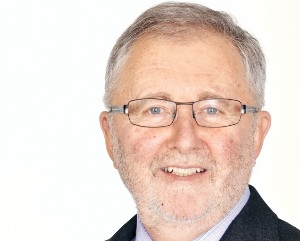KiwiSaver should invest more in NZ: Gaynor
New Zealanders have missed out on KiwiSaver returns because of their lack of exposure to the local share market, one manager says.
Friday, December 15th 2017, 6:00AM  2 Comments
2 Comments
by Susan Edmunds

Milford Asset Management executive director Brian Gaynor has rejected calls for KiwiSaver to be made compulsory, saying it would take the competitive onus away from fund managers.
But he said changes were needed.
Gaynor said, although the NZX had risen strongly every year since 2012, only about 10% of KiwiSaver money was in the local share market, so KiwiSaver members had missed out.
Milford's active growth KiwiSaver scheme usually has about 75% of its funds invested in Australasian equities. Its conservative and balanced funds can have up to 20% and 40%, respectively.
But Gaynor said the New Zealand market was too small and did not offer the investment opportunities people wanted.
"It doesn't have financial services companies, except for Heartland Bank, whereas in Australia, the big four banks are all worth more than the total value of the New Zealand share market, so the NZX doesn't have the opportunities for KiwiSaver investors."
Instead, KiwiSaver money was going offshore, into cash and bonds, he said. The foundation of KiwiSaver was based on a defensive asset allocation.
“I’d also like to see more KiwiSaver funds invested into equities rather than into defensive assets like cash and bonds. Default schemes are some of it but even non-default schemes are even a bit conservative, too."
Gaynor said he did not agree with a recent focus on fees. In a New Zealand market, fees were not such an important consideration, he said. "We're quite different to the United States."
The top-performing funds were those with average or slightly above average fees, he said. "New Zealand KiwiSaver funds are multiassets, they're much more complex than the type of funds where lower fees mean a difference over a period of time."
| « KiwiSaver tax breaks mooted | KiwiFund could have unfair advantage » |
Special Offers
Comments from our readers
Looking specifically at Mr Gaynor’s comments he says that “the top performing funds were those with average or slightly above average fees.” That may be so but the driver of those high returns was the fact that those funds were overweight NZ shares which have outperformed international stocks in that period. That is the reason the high cost funds outperformed and the performance is in spite of the fees. However what is important is future returns, returns which don’t benefit from stockmarkets getting more expensive, returns which are driven by earnings growth. Earnings growth has averaged 1-2% pa real in the long term so global equities, using the Gordon Growth model, are priced to produce a 6% pa future return. A 2% annual fee structure, excluding transaction costs, is obviously ridiculous.
Mr Gaynor goes on to say that multi-asset funds require higher fees because they are complex. In my opinion that is equally ridiculous. We manage almost $1 bn of multi-assets in individual portfolios and the total fees our clients pay on average are less than 55 basis points.
Sign In to add your comment
| Printable version | Email to a friend |



What!?